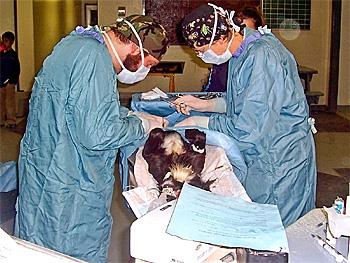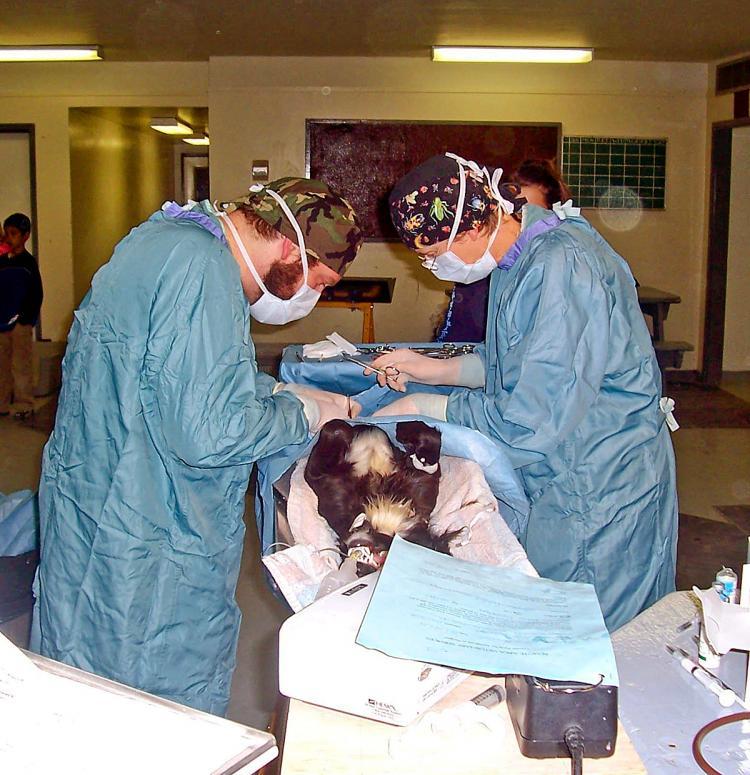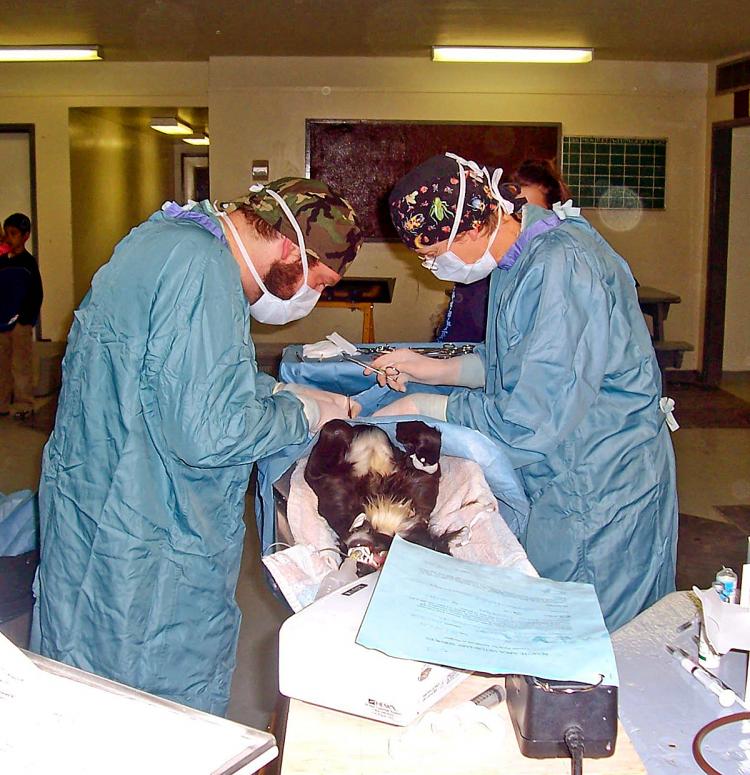The shocking death of a 10-year-old boy who was killed by a pack of dogs has called attention to the problem of large numbers of roaming dogs in Northern Saskatchewan communities.
Saskatchewan is a Canadian province directly north of Montana and North Dakota.
Keith Iron was attacked and killed by three dogs as he was walking to his cousin’s house on the Canoe Lake First Nation on Jan. 30. His body was found in the snow in a neighbour’s yard about half a block from his home.
The dogs, which have since been destroyed, were owned by people living in the community. Cynthia Ballantyne, Keith’s aunt, said that over 200 dogs constantly roam the reserve in packs, searching for food.
“Something has to be done about these animals because kids go out every day, and they are afraid,” Ballantyne told the Globe and Mail. “It’s not safe for them to go out. It is the same all across the north. Reservations need help with these animals. The dogs are overpopulated and not fed anything at all.”
The previous week, after another child had been attacked near a school, community members gathered at a meeting and demanded that the local leadership take action to address the problem, but nothing was done.
“I feel responsible. The leadership feels responsible,” said Canoe Lake Chief Guy Lariviere at a media conference in Saskatoon last Monday. He said the owners of the dogs that attacked Keith are also “really feeling the impact of what happened.”
The chief said that although a bylaw exists requiring dog owners to tie up animals that are deemed to be dangerous, the resources aren’t available to enforce it.
“We can’t afford a dogcatcher, for one thing,” he told reporters. He added that he has asked the Royal Canadian Mounted Police for help in the past, only to be told that dealing with dogs is a municipal responsibility.
It was in response to the “huge population overload of dogs” in Northern Saskatchewan communities that Dr. Lesley Sheppard, a veterinarian in Regina, helped found the Remote Area Veterinary Services Program.
Since 2004, Sheppard has been bringing her spay and neutering program to remote communities in an effort to curb unrestrained breeding among dog populations.
“We will go to the community, they house us and feed us, everybody volunteers, and over a two-day period, we set up a portable surgery and we spay and neuter as many dogs as we can,” she said.
While some of the dogs are feral, most are owned by someone, said Sheppard. However, it is in the large numbers that the problem lies.
“There’s enormous numbers and that just leaves the potential to have these incidents where dog-bites happen. Over the years, actually there have been quite a few incidences, at least 12, of children either being very savagely bitten or dying.”
Reservations in other provinces have a similar problem. In the North Tall Cree reservation in Northern Alberta, five-year-old Lance Ribbonleg died after he was mauled by dogs in 2006. Earlier that same year in communities in Manitoba, a three year-old and a two-year-old were mauled to death in separate incidents.
Shiloh Bershfield, while playing with friends near his home in Ile-a-la-Crosse, about 520 kilometres [325 miles] north of Saskatoon, was badly savaged by dogs last September, but survived.
Sheppard said many communities are struggling to make ends meet and cannot afford effective dog control or to travel to the nearest city to have their animals spayed or neutered.
“In a lot of these communities the closest vet is six hours away. If it’s the difference between feeding your family or spaying your dog, well, you’re going to feed your family. There are so many other financial problems going on that this is kind of put low down on the list.”
New Democrat Member of the Legislative Assembly Buckley Belanger, who lives in Il-a-la-Crosse, told the Globe and Mail newspaper that “sometimes there isn’t enough money left to do the very basic, necessary safety measures.”
A “two-dollar bullet” may be the “quicker, more affordable option” to deal with the problem, said Belanger. “In these northern communities, there are many more challenging problems than dog control.”
Sheppard, whose program offers dog-bite prevention seminars for children, says a three-pronged approach is needed: population control through spaying and neutering, responsible dog ownership, and educating the children.
Her veterinary services program could be expanded, but funding is needed to help with the cost of such things as anaesthetic and surgery materials, vaccinations for the dogs, and transportation, she said.
“Financially, if we had a good solid donation base either from a large company or just somebody excited about it, that would help to fund us on a regular basis, and then we could broaden the number of communities that we go to.”
Saskatchewan is a Canadian province directly north of Montana and North Dakota.
Keith Iron was attacked and killed by three dogs as he was walking to his cousin’s house on the Canoe Lake First Nation on Jan. 30. His body was found in the snow in a neighbour’s yard about half a block from his home.
The dogs, which have since been destroyed, were owned by people living in the community. Cynthia Ballantyne, Keith’s aunt, said that over 200 dogs constantly roam the reserve in packs, searching for food.
“Something has to be done about these animals because kids go out every day, and they are afraid,” Ballantyne told the Globe and Mail. “It’s not safe for them to go out. It is the same all across the north. Reservations need help with these animals. The dogs are overpopulated and not fed anything at all.”
The previous week, after another child had been attacked near a school, community members gathered at a meeting and demanded that the local leadership take action to address the problem, but nothing was done.
“I feel responsible. The leadership feels responsible,” said Canoe Lake Chief Guy Lariviere at a media conference in Saskatoon last Monday. He said the owners of the dogs that attacked Keith are also “really feeling the impact of what happened.”
The chief said that although a bylaw exists requiring dog owners to tie up animals that are deemed to be dangerous, the resources aren’t available to enforce it.
“We can’t afford a dogcatcher, for one thing,” he told reporters. He added that he has asked the Royal Canadian Mounted Police for help in the past, only to be told that dealing with dogs is a municipal responsibility.
It was in response to the “huge population overload of dogs” in Northern Saskatchewan communities that Dr. Lesley Sheppard, a veterinarian in Regina, helped found the Remote Area Veterinary Services Program.
Since 2004, Sheppard has been bringing her spay and neutering program to remote communities in an effort to curb unrestrained breeding among dog populations.
“We will go to the community, they house us and feed us, everybody volunteers, and over a two-day period, we set up a portable surgery and we spay and neuter as many dogs as we can,” she said.
While some of the dogs are feral, most are owned by someone, said Sheppard. However, it is in the large numbers that the problem lies.
“There’s enormous numbers and that just leaves the potential to have these incidents where dog-bites happen. Over the years, actually there have been quite a few incidences, at least 12, of children either being very savagely bitten or dying.”
Reservations in other provinces have a similar problem. In the North Tall Cree reservation in Northern Alberta, five-year-old Lance Ribbonleg died after he was mauled by dogs in 2006. Earlier that same year in communities in Manitoba, a three year-old and a two-year-old were mauled to death in separate incidents.
Shiloh Bershfield, while playing with friends near his home in Ile-a-la-Crosse, about 520 kilometres [325 miles] north of Saskatoon, was badly savaged by dogs last September, but survived.
Sheppard said many communities are struggling to make ends meet and cannot afford effective dog control or to travel to the nearest city to have their animals spayed or neutered.
“In a lot of these communities the closest vet is six hours away. If it’s the difference between feeding your family or spaying your dog, well, you’re going to feed your family. There are so many other financial problems going on that this is kind of put low down on the list.”
New Democrat Member of the Legislative Assembly Buckley Belanger, who lives in Il-a-la-Crosse, told the Globe and Mail newspaper that “sometimes there isn’t enough money left to do the very basic, necessary safety measures.”
A “two-dollar bullet” may be the “quicker, more affordable option” to deal with the problem, said Belanger. “In these northern communities, there are many more challenging problems than dog control.”
Sheppard, whose program offers dog-bite prevention seminars for children, says a three-pronged approach is needed: population control through spaying and neutering, responsible dog ownership, and educating the children.
Her veterinary services program could be expanded, but funding is needed to help with the cost of such things as anaesthetic and surgery materials, vaccinations for the dogs, and transportation, she said.
“Financially, if we had a good solid donation base either from a large company or just somebody excited about it, that would help to fund us on a regular basis, and then we could broaden the number of communities that we go to.”







